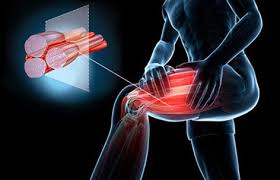An involuntarily and forcibly contracted muscle that does not relax. When we use the muscles such as those of our arms and legs that can voluntarily be controlled, they alternately contract and relax as we move our limbs. Muscles that support our head, neck, and trunk contract similarly in a synchronized fashion to maintain our posture. A muscle (or even a few fibers of a muscle) that involuntarily (without consciously willing it) contracts is called a "spasm." If the spasm is forceful and sustained, it becomes a cramp. Muscle cramps can last anywhere from a few seconds to a quarter of an hour, and occasionally longer. It is not uncommon for a cramp to recur multiple times until it finally goes away. The cramp may involve a part of a muscle, the entire muscle, or several muscles that usually act together, such as those that flex adjacent fingers. Some cramps involve the simultaneous contraction of muscles that ordinarily move body parts in opposite directions. Muscle cramps are very common and become increasingly frequent with age. Any muscle under voluntary control (skeletal muscle) can cramp. The legs and feet, and particularly the calf (the classic "charley horse"), are especially subject to cramps.



 Contact Us
Contact Us







 Hospitals
Hospitals
 Doctors
Doctors
 Diagnostic
Diagnostic
 Pharmacy
Pharmacy
 Health Tips
Health Tips
 Blog
Blog

























Comments